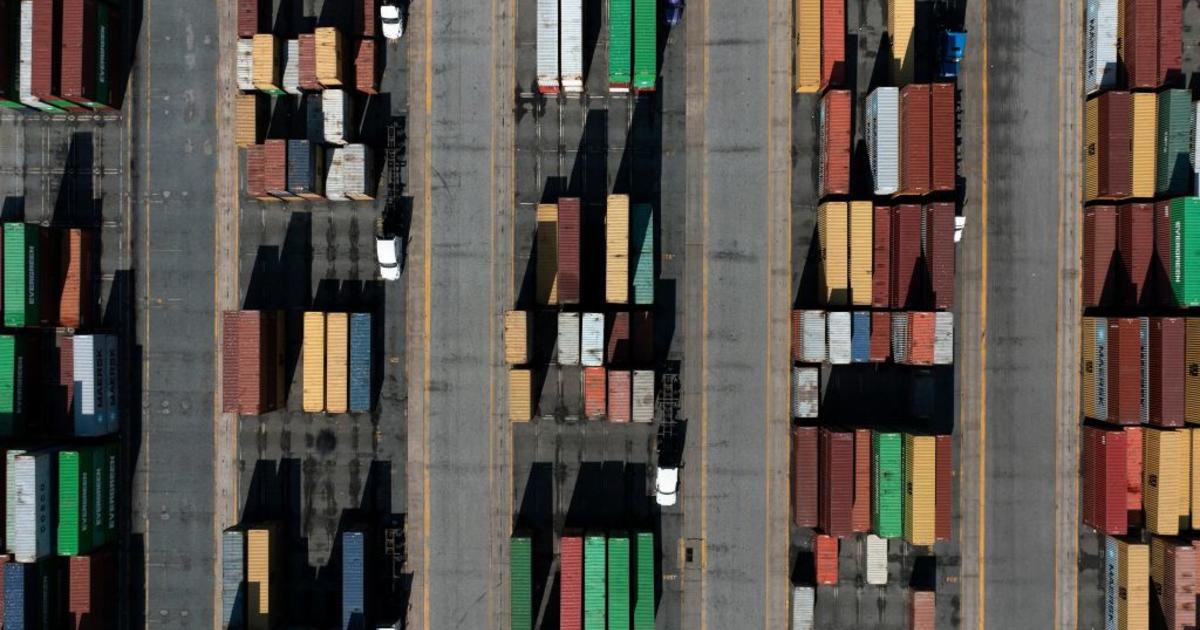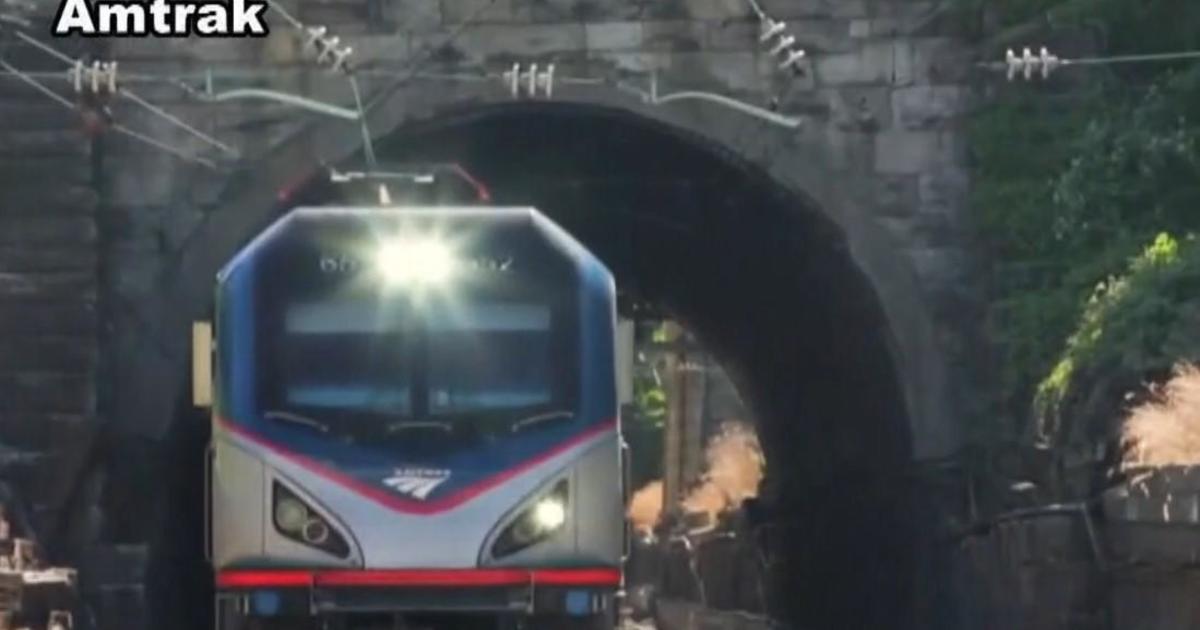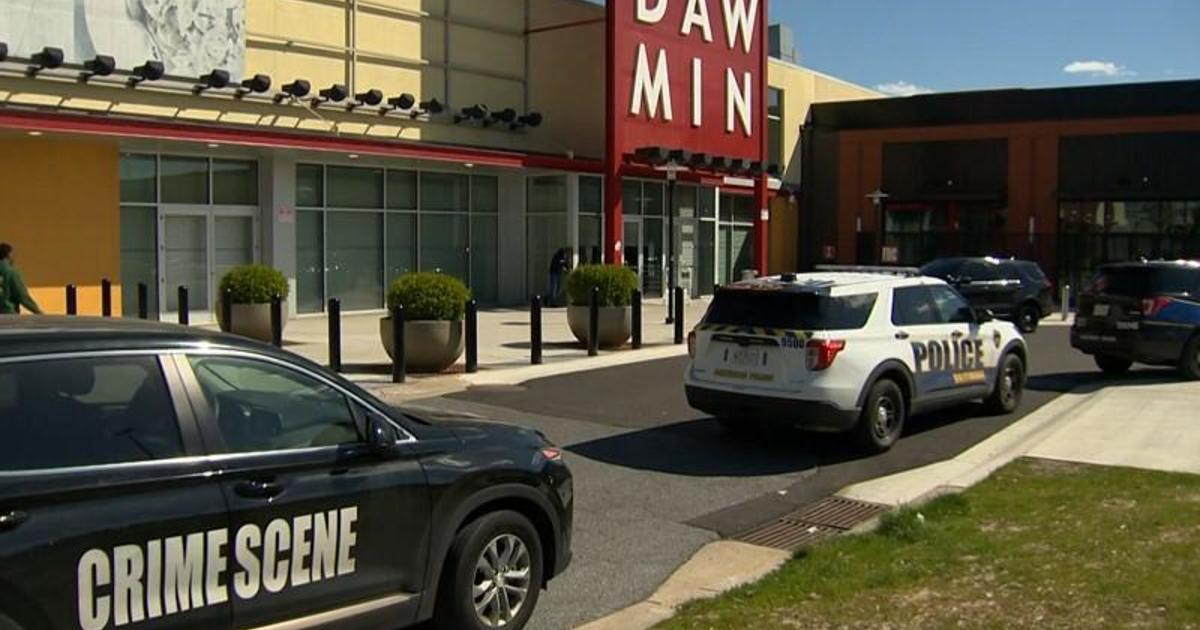While West Coast Ports Grapple With High Demand, The Port Of Baltimore Is Chugging Along
BALTIMORE (WJZ) -- While the supply chain crisis is impacting most of the U.S., the Port of Baltimore is moving & grooving.
WJZ was granted exclusive access behind the gates of our local port.
From the outside looking in, it appeared to be a routine day for the port, but down on the front lines, you're quickly in awe of a workflow that's anything but normal.
While the supply chain crisis has rocked the country, especially ports on the west coast with long stretches of congestion, our backyard continues to be smooth sailing.
"Cargo volumes are up, ships are getting turned back around & we don't have any ships waiting like in other ports," says Scott Cowan, President of the International Longshoremen's Association, Local 333, and International Vice President for the ILA.
"We are doing extremely well when it comes to the supply chain crisis and port congestion," said Bill Doyle, Executive Director for the Maryland Port Administration. "Actually, in the Port of Baltimore, we don't have any congestion. There are no ships on anchor that need to get in and deliver goods. The retail items we need in the Mid-Atlantic and northeast, there is no congestion."
While the port has some busy days, Doyle said the port has never seen a backup like those the west coast have seen in the last year.
"You may get an influx of ships that come in at any one time and we may have a day or so where you could have congestion," says Doyle. "We're not going to have 12 days like on the west coast, 12 days before you can even get your ships of the dock and into the goods."
It's a port that's wheeling and dealing in a wide variety that many couldn't even fathom.
"You have everything from grain, to Under Armor clothes, to beer, to beef, to agriculture equipment, all coming in and out of the port," Cowan said.
"Not only that, we are the number one largest importer and exporter of automobiles," said Bill Doyle, Executive Director for the Maryland Port Administration.
Doyle credits the Port's consistency to being ahead of the game.
"What we've done, what we've prepared for in the port of Baltimore over past 10 years is larger cranes & we've also dredged the port so we can get the larger ships," says Doyle.
"Through Governor Hogan, so much money has been invested in port infrastructure because we know we're the place that is dead center, the population oval, where we can receive the ships and get the goods into the stream of commerce," Doyle said.
The port also has a slew of distribution centers at its disposal nearby, a huge advantage.
"Retailers like Amazon, Home Depot, Costco -- all built distribution centers in and around the port. So, we can receive the ships, get the supplies into distribution centers & out into the stream of commerce" Doyle said.
Mix in the pandemic and a "boom" in e-commerce, it's a demand Baltimore is capitalizing on.
"We've seen an increase in volume in terms of containers: sugar, paper, cars all over the last decade have increased," Cowan said. "It's probably second to none."
Both Doyle & Cowan say a typical day's product can be upwards of 45 containers on & off a vessel per hour. Each one of those can weigh anywhere from 5 to 50 tons on average.
Between that work & the trucking companies, they said 3,000 to 4,000 containers are coming in and out of the port every day.
"The craziness we're seeing right now, have you ever seen anything like this before?" asks Rick Ritter.
"To give you an idea, when I started on the docks years ago, I joined the local with 700 people. We now have 1700" says Cowan, who represents the workforce as local union 333 president for the longshoremen.
These workers are often clocking 20-hour days.
"It's a very good problem to have. It's put a lot of good people to work with good family-sustaining jobs and that's what's very important" says Cowan. "We're lucky to have a very skilled, safe workforce that has the proper training to do their job."
Another tool that helps: some of the best equipment. The port recently acquired new cranes that will debut in just weeks.
"These new cranes are higher, faster, more technologically advanced and that makes it easier to operate. This, while the speed of moving boxes on and off vessels increases," Cowan said.
"To you, what is the most difficult part about handling this volume?" Ritter asked Cowan.
"It's very dangerous. Increased volume means increased traffic in terminals, truck traffic, as well. The more people in a smaller area, the tougher it is" Cowan says.
"Many don't realize how much longshoremen and the trucking companies do to keep this thing moving and it takes a toll on workers itself. Without the truckers and ILA on each end of the equation, cargo doesn't move. It's plain and simple" Cowan said.
Truckers are the key to keeping things running, according to Doyle.
"No port, I don't care who you are, no port can survive without their truckers," Doyle said. "The trucking community is number one here in the Port of Baltimore. We've done a really good job of helping truckers get in & out because recently, we got rid of stop & weigh. We now have weigh in motion, so that doesn't slow them down. We also opened up another gate on the side of the port. We're trying to make the trucker experience easier because they make their money on turn times."
There's also the misconception at times that because some grocery shelves are bare, the Port of Baltimore has to do with it.
"Most of the food, not all, that we have in the United States is grown here," Doyle said. "We will export our agriculture and frozen products. I always say hold on, that's not a port issue. We grow our own food. That doesn't have to do with our port."
If you have a package delayed or you see shelves that are bare, odds are those items could be coming from a port that's congested, like out west.
As far as that congestion on the other side of the country, Doyle says it could continue for a bit longer.
"As far as out west, I do see it leveling out eventually, but I can't say when," Doyle said.
"Doing the same thing over & over & expecting different results is insanity," Doyle said. "Until shippers and ocean carriers realize there are more ports than California, they're going have to change their habits to get their goods in here."
And Doyle's throwing out a little reminder that Baltimore's port is stronger than ever.
"If it's not working on another port, give me a call and we'll get it done," says Doyle.



